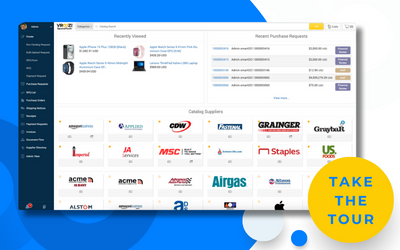Even the most seasoned procurement professionals are bombarded by confusing or misused terms within the business. If you don’t straighten out this jargon before you start strategizing, it can feel like you’re piecing together a jigsaw puzzle in the dark. This is why it’s valuable to shine a light on two of the most misunderstood terms out there: procurement versus procure-to-pay (P2P).
No matter how often you’ve heard these terms used interchangeably, they’re distinct. And knowing the differences between procurement and P2P—and the challenges of each function—is the first step toward piecing together a procurement strategy that lowers costs, provides sourcing advantages, and enables your company to grow.
Procurement vs. procure-to-pay: What are the differences?
When looking at procurement versus procure-to-pay, it’s easy to become confused. Although these terms are distinct, they also have some overlap.
Procurement involves purchasing goods or services from suppliers and crafting a strategy to improve sourcing, contracts, costs, and supplier relationships. So procurement can span everything from sourcing goods and services to negotiating terms, ordering, ensuring accuracy and quality, and managing payments.
Alternatively, procure-to-pay describes procurement’s connection to accounts payable. Procure-to-pay includes procurement plus accounts payable—a process that stretches from searching for goods and services to managing purchases, paying, reporting, and everything in between. It’s important for companies to improve procure-to-pay processes because the more these workflows are digitally connected, automated, and streamlined, the lower company costs will dive, the more time teams save, and the more spend visibility procurement gains.
What are common procurement challenges?
To deliver on your procurement strategy, you need to identify ways to lower costs, strike new deals with suppliers, build supply chain resilience, manage spend, and more. However, there are a few challenges that often sabotage procurement initiatives. Here are a few of the most common pitfalls that disrupt procurement plans:
- Lack of visibility: Most procurement leaders don’t have access to the spend data they need to form and execute a plan. Everything from unapproved spending to limited reports, inaccurate spend figures, and more can block your spend visibility. This can stop you from hitting your procurement goals.
- Failing supplier relationships: Payment mishaps, sluggish manual inputs, or other factors will slow down the payment process. In turn, your supplier relationships can suffer, making it impossible to cash in on long-term supplier discounts or new savings opportunities.
- Rogue spend: If your enterprise resource planning (ERP) or internal digital payment system is difficult to use, employees will sidestep it and purchase outside the platform. As a result, they may miss out on pre-negotiated deals and limit spend visibility.
What are common procure-to-pay challenges?
To empower teams and push their companies forward, leaders need to refine and optimize their procure-to-pay processes. But like procurement, there are common issues that hold up the P2P process. Here are some of the biggest holes:
- Inefficient processes and bloated costs: Inefficient processes not only waste time, but also burn up resources and eat into your company’s capital. Every second your employees spend on unnecessary tasks shaves money off your company’s bottom line.
- Slow or delayed payments: Every friction point in your P2P process can slow down payments. Your suppliers are left waiting, eroding your partnerships and eliminating opportunities to negotiate spending advantages.
- Wasted time: When the P2P process includes errors, non-digital payments, and manual inputs, it wastes employees’ time. And every moment they waste putting out fires pulls time away from strategic initiatives.
What are the differences between procurement vs. procure-to-pay (P2P) solutions?
Because there’s an overlap between procurement and P2P, improving one can also unlock new opportunities in the other. For instance, using a digital procure-to-pay solution to automate tasks and free up employees can give you more accurate spend data and more time to enact your procurement strategy.
The most impactful P2P solutions are automated platforms. Automated procure-to-pay software lets you place orders, manage approvals, track shipments, and handle payments in a matter of clicks. Tools that automate 3-way matching can streamline purchase order processes and fast-track PO management. This increases P2P process efficiency, polishes workflows, cuts down manual work, reduces errors, and chisels out more time to focus on strategic work.
Procurement can also tap into automated e-procurement solutions. Best-in-class software uses mobile and modular platforms to automate purchasing, order tracking, approvals, spend management, and other important procurement tasks. It also lays out critical spend data you can use to make smarter strategic decisions.
Start improving your procurement operation.
Understanding the exact definitions of “procurement” and “procure-to-pay” is valuable, even if procurement-related terms are often used interchangeably. When you know the differences and the best ways to improve both, you can chart a course past your goals.
Want to learn more ways to improve your procurement operation? Download Spend Matters: The Evolution of Corporate Procurement Systems to learn how procurement solutions can empower your team and drive company-wide growth.




